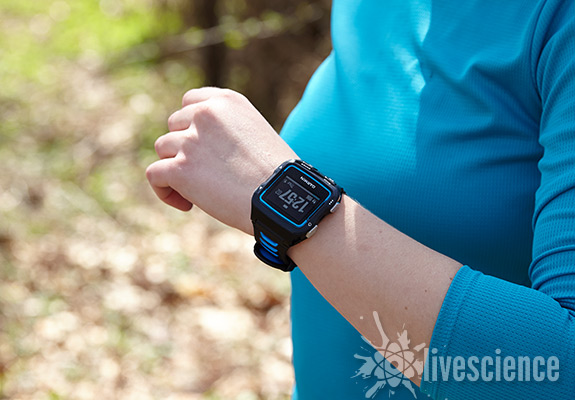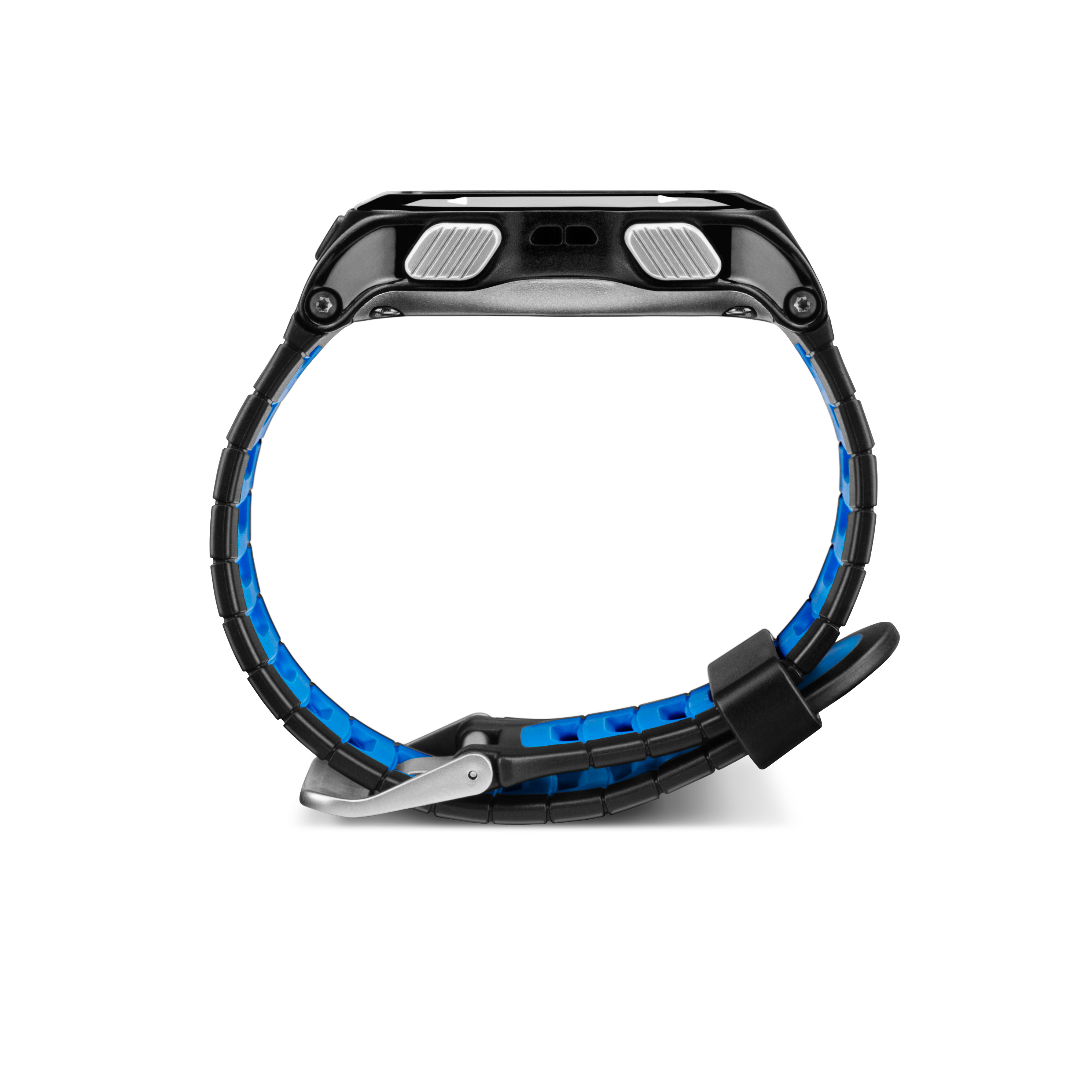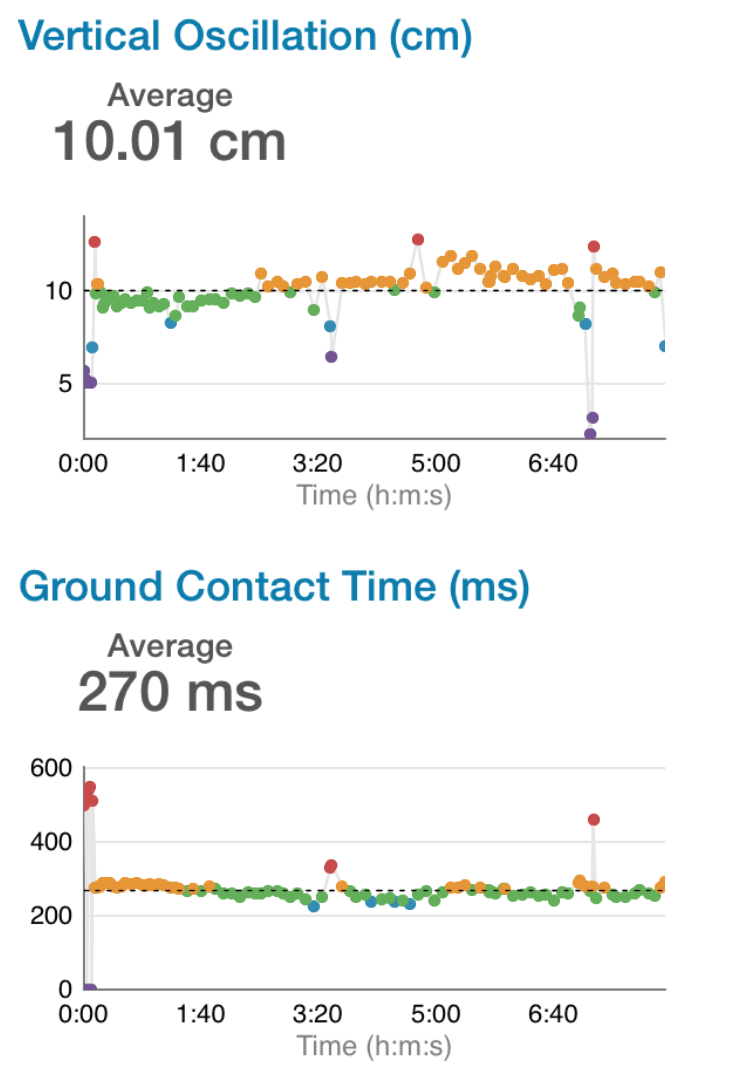Garmin Forerunner 920XT: GPS Watch Review

The Garmin Forerunner 920XT is a GPS watch that tracks running, cycling and swimming. The watch also counts steps, tracks sleep and can be paired with a heart rate monitor that enables you to check your pulse as you exercise. The FR920XT is designed for serious athletes and provides advanced metrics for all three sports it tracks. Runners can use the watch to analyze pace, cadence (strides per minute), ground contact (the amount of time your foot stays on the ground per stride) and vertical oscillation (vertical up and down movement, or "bounce"), as well as other metrics. Cyclists and swimmers can use the watch to track detailed data for their preferred sports, as well.
It should come as no surprise that such a sophisticated tracking device costs much more than fitness bands that only monitor steps taken, calories burned and nightly sleep. But at $490, the FR920XT is also more expensive than some other multisport GPS watches on the market, such as the TomTom Multi-Sport Cardio, which retails for $250 on Amazon. I used the FR920XT for about a month; wearing it on runs, swimming with it in the pool and even strapping it on for a few bike rides (though admittedly, I am not a cyclist). Here's what I found:
Overall rating: 8.25/10
The Forerunner 920XT is the cream of the crop when it comes to multisport GPS watches. Its ability to track advanced running metrics, such as vertical oscillation and ground contact time, sets it apart from other products in this category. [Best GPS Running Watches]
Unlike some triathlon watches, though, the FR920XT can't monitor your heart rate under water, and the watch is also a bit too bulky (and ugly) to wear as your everyday watch.
Comfort/Design: 8/10
The FR920XT is a big watch. It measures 2.2 inches (55 millimeters) across and weighs slightly more than 2 ounces (57 grams). In comparison, the Fitbit Surge, a GPS-enabled watch that tracks running and other exercises, is just 1.34 inches (34 mm) wide. If you're looking for a small, understated GPS watch, the FR920XT isn't it. However, the watch is relatively slender, sitting just 0.5 inches (12.7 mm) off the wrist, so it can easily slip under a wetsuit or fit inside a glove during cold-weather runs.

Despite its bulk, the FR920XT is comfortable to wear. The rubbery strap is adjustable, and I had no trouble taking it on and off. And though it's no lightweight, I barely noticed the weight of the FR920XT on my wrist when I was working out. However, the watch looked so big on my wrist that I couldn't bring myself to wear it as a regular accessory.
Sign up for the Live Science daily newsletter now
Get the world’s most fascinating discoveries delivered straight to your inbox.
Part of the reason the FR920XT seemed impractical as an everyday timepiece had to do with its color. I tested a black unit with blue accents around the display screen and the wristband. The watch also comes in white with red accents, but both color options are sporty and, in my opinion, a bit ugly. I prefer the monochrome look of some other sports watches, like that of the white Suunto Ambit3 Sport.
Looks aside, the FR920XT's design is practical for working out. The watch's four buttons have tiny notches, making them easy to press, even when you're under water or exercising in the rain. And the display screen is easy to read both indoors and outside.
User friendliness: 8/10
Like all multisport GPS watches, the FR920XT has a lot of features, which means you'll want to get to know the watch before you start using it to track anything. Luckily, the instruction manual that comes with this device is easy to understand. The Garmin website, particularly the company's FAQ page, is also a great resource, whether you're getting started with the FR920XT or if you encounter any problems with it. I particularly liked the site's short videos, which show you how to set up and navigate the watch.
But you may not need video tutorials to figure out the FR920XT, because despite its many features, the watch is fairly simple to navigate. The display screen shows you the time of day (down to the second), as well as the date and day of the week. At the top, there's a battery icon, so it's easy to see when it's time to plug the watch into the charger. I found that I rarely needed to charge the watch, which lasts for up to 40 hours in UltraTrac (power-saving) GPS mode. In regular GPS mode (training mode), you can get up to 24 hours of battery life. And if you never turn on the GPS feature, you can use the watch for four months without charging it, according to Garmin.
The watch shows your daily step count on the main display screen, and has Garmin's signature move bar — an icon that appears on the screen if you've been inactive for more than an hour. If you continue to sit around after the move bar appears, the watch will buzz your wrist to remind you to get up and move around. Much to my delight, you can turn this feature off. You can also turn off the annoying beeping noises that sound every time you press a button on the FR920XT, as well as the alert tones that chirp loudly each time you start or pause the stopwatch.
To start using the FR920XT, you need to download Garmin's software and connect the watch to your computer using the provided charging cradle and USB cord. You can then create a Garmin Connect account, which will allow you to see the data your watch collects online or on a mobile app. Unlike most wearable devices I've tested, you can sync data from the FR920XT to the Garmin Connect app via Wi-Fi, as well as via Bluetooth. While I had no trouble syncing the watch with my phone via Bluetooth, I liked knowing that, if Bluetooth connection failed, there was another, wireless way to get data off the watch and onto my phone. If you're not using a mobile device to view your data, you can set the watch on its charging cradle and plug it into your computer to upload your workout stats to the Garmin Connect website.
Value of information: 8/10

As an amateur athlete, I wasn't familiar with a lot of the metrics that the FR920XT tracks. Some of the more basic data fields — pace, speed and elevation — are fairly obvious and easy to put into context without any outside information. But for the more advanced metrics, like cadence and vertical oscillation for running, or swim efficiency (SWOLF) for workouts in the pool, I needed to do some research in order to analyze my data.
Garmin does try to put some of this data into context for users. After running, you can log in to Garmin Connect to analyze graphs that display your cadence, vertical oscillation and ground contact time over the course of your run. These graphs are color-coded to reflect the percentage of runners (specifically, runners who participated in a set of trials conducted by Garmin) who achieved similar results. For example, purple shading inside the cadence graph means that your strides per minute are on par with runners who ranked in the 95th percentile in the Garmin trials. In other words, if your strides per minute fall in this purple range on the graph, your cadence is equivalent to that of a very experienced runner. You can get more information about the color-coded graphs on the Garmin Connect website by clicking on the question mark icon next to the graph title. There's also additional information about the color system, and running metrics in general, on the company's website, including links to some insightful FAQs.
Like most high-end GPS watches, the FR920XT can be paired with a number of different sensors that make it even more useful for athletes. And unlike the Suunto Ambit3 Sport, which only connects to such accessories via Bluetooth Smart, you can connect heart rate monitors and other sensors to the FR920XT via ANT+, another wireless technology that sends data from the sensor to your watch. Garmin has a full list of compatible sensors for the FR920XT on its website (in the section marked Accessories). You can also explore the Specs tab on the same page to find out more about the watch's features for running, swimming, cycling and activity tracking. [The Best Heart Rate Monitor Watches]
I paired the FR920XT with a Garmin heart rate sensor to monitor my pulse while I was running and cycling. The data the watch collected seemed accurate based on how fast I was running and how far along I was in my workout. I also compared the watch with a separate wrist-worn tracking device with a built-in heart rate sensor and found that the FR920XT was much more precise in tracking dips in my heart rate (particularly after I had stopped running).
I found the GPS data that the FR920XT supplied to be very accurate. Like most GPS watches I've tested, the watch had trouble picking up a signal when I was in an urban area surrounded by tall buildings. But in more open urban landscapes (i.e., parks), the watch consistently picked up a GPS signal within 30 seconds. It was even faster at picking up a signal in the suburbs.
In the pool:
One of the major selling points of multisport GPS watches is their waterproof rating. Like most triathlon watches, the FR920XT has a water rating of 5 ATM, which means it can withstand pressure equivalent to what is experienced 50 meters (about 164 feet) under water. You can use the watch to track both indoor and outdoor swimming, though GPS tracking is only available in open-water swimming mode. [Best Fitness Trackers for Swimmers]
I tested the FR920XT in a pool, and it accurately tracked my laps, strokes per lap, total distance, swimming efficiency (or SWOLF score), pace and calories burned. The watch also did a good job of identifying which of the four major strokes (freestyle, backstroke, breaststroke or butterfly) I was swimming, and I had the option of putting the watch into drill-logging mode anytime I used a kickboard. The ability to log drills without having to just pause the stopwatch is a feature that is missing from most other multisport GPS watches. However, the FR920XT doesn't let you monitor your heart rate under water. If you want to collect heart rate data in the pool or in open water, you'll want to check out the Suunto Ambit3 Sport or the Polar V800 GPS watch.
Motivation/Inspiration: 9/10
While I was using the FR920XT to track my workouts, I sometimes felt a light buzz on my wrist, notifying me that I had earned a new "badge." Like Fitbit, Garmin sends users virtual badges after they've reached certain fitness milestones. For instance, I got a badge after tracking my longest run to date with the watch and another one after attaining my highest elevation gain on a bike ride. While these little awards seemed a bit silly when I first started using the watch, I can see how they might become more meaningful after you've been using the watch for a while.
Garmin Connect seconds as a social media network for anyone with a Garmin Connect account. Through the app or website, you can search for people you know who also use a Garmin product. You can also request to connect with Garmin users you've never met. However, you can't search for other Garmin users in your area as easily as you can with Suunto Movescount, the companion app for Suunto's GPS watches. But like Movescount, Garmin Connect helps people stay motivated by letting them join online groups with other users. And the app also lets you partake in challenges, in which you compete against other Garmin users around the world.
More Reviews: See all our GPS watch reviews to find the best one for your needs.
Follow Elizabeth Palermo @techEpalermo. Follow Live Science @livescience, Facebook & Google+.

Elizabeth is a former Live Science associate editor and current director of audience development at the Chamber of Commerce. She graduated with a bachelor of arts degree from George Washington University. Elizabeth has traveled throughout the Americas, studying political systems and indigenous cultures and teaching English to students of all ages.









